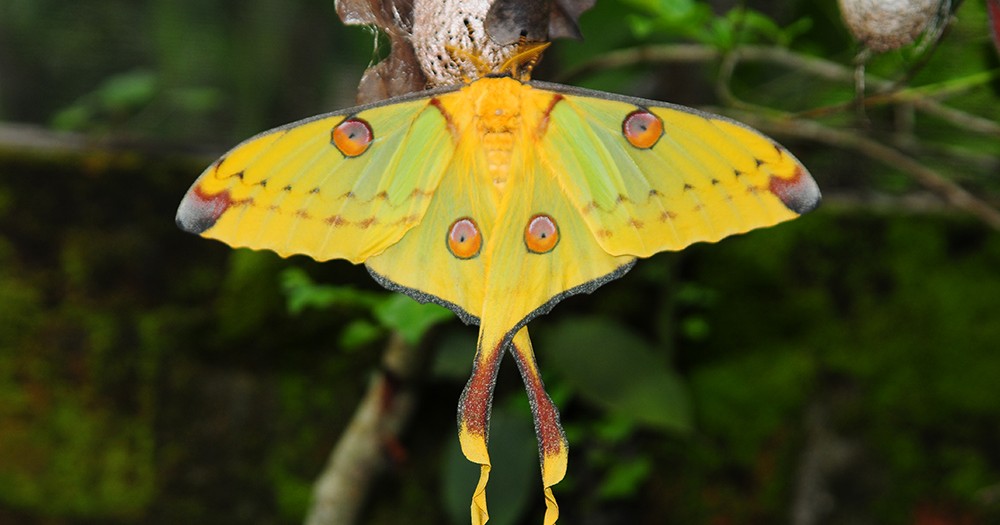Death’s-head Hawkmoths (Acherontia)
The death’s head hawkmoth is a genus of sphinx moths known for the unique human skull-like pattern on the thorax present in all of the three species. These giant nocturnal moths have several distinctive traits, including their ability to produce a squeaking sound by inhaling and exhaling air.
List of Species in this Genus
- African Death’s-head Hawkmoth (Acherontia atropos)
- Lesser Death’s-head Hawkmoth (Acherontia styx)
- Greater Death’s-head Hawkmoth (Acherontia lachesis)
Description and Identification
Caterpillar
These larvae have three morphs – bright green, bright yellow, and mottled brown. There are blue spots and stripes on every segment of the dorsal region.
Scientific Classification
- Family: Sphingidae
- Genus: Acherontia
Caterpillars of this genus have a tail horn, which curves as the larvae mature. If threatened, they will click their mandibles to ward off their attackers. They will also bite in some cases. When it reaches its final instar, the larva measures13-15 cm.
The larva will eat leaves of plants with alkaloids in them, which it then absorbs. This gives them a bitter taste, deterring predators.
Adult Moth
Sexual Dimorphism: Present. The females are larger than the males.
Color and Appearance
Forewings: When they are opened, they have a dark mottled brown appearance, blended with speckled patterns of pale brown. When they are closed, the mottle pattern remain unchanged.
Hindwings: When they are opened, the wings are buff-orange and have two dark bands parallel to the hind margin. When they are closed, the buff-orange and the bands barely remain seen.
The abdomens of these moths have a similar orange coloration as their hindwings, while the most noticeable feature being a series of yellow hairs on their thorax. When blended with the markings on their forewings, these hairs resemble an inverted human skull.
Average wingspan: 13 cm
Flight pattern: Erratic
Season: Year-round
Pupa
Once the larva has matured, it constructs a chamber similar to the size of a chicken egg 20-25 cm underneath the soil. The pupa is reddish-brown and stout.
Egg
Female moths of this genus lay green or greyish-blue eggs under the old leaves of any preferred host plant.
Quick Facts
| Distribution | The African death’s head hawkmoth inhabits most of Africa and Europe, while the other two species live in Asia. |
| Habitat | Dry, sunny areas with open vegetation like bushes and shrubs |
| Lifespan of Adults | 6 weeks |
| Predators | Birds, bats |
| Host Plants | Primarily potato; other plants include common buckthorn, jasmine, tomato, and woody nightshade. |
| Adult Diet | Honey from the hives of honey bees; they mimic the scent of the bees to remain undetected while they feed |
Did You Know
- This moth has an immense pop-cultural significance owing to the skull-like pattern on its back. One of its most notable appearances is in the book (and subsequent movie) The Silence of the Lambs.
- The mark on the thorax had led to superstitions around the moth since the 19th century. For instance, the discovery of two moths in the bedchamber of King George III was linked at the time to his second major bout of madness. There is no actual connection between the two incidents.
- Even the species names of the three moths are associated with Greek myths about death. The word styx refers to the river of the Underworld, while atropos and lachesis are two of the three Fates who determine the course of one’s life and their eventual death.
- The African death’s head hawkmoth, a species of this genus is the fastest moth currently alive, reaching speeds of up to 30 mph.
Scientific Classification
- Family: Sphingidae
- Genus: Acherontia




